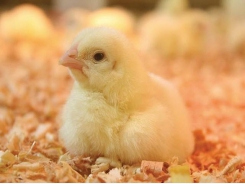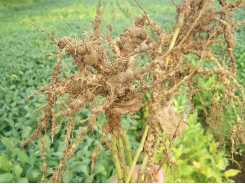Water can be the hidden problem in poor broiler performance

Drinking water for poultry flocks can be a hidden and under-diagnosed problem in poor flock performance.
The number of gallons of water consumed per 1,000 broilers increases from around 5 gallons on the first day of age to around 80 gallons or more at 42 days.
Dr. Susan Watkins, a leading expert on drinking water for poultry, receives lots of what she calls "Dear Dr. Watkins letters" about flock performance in emails at her office at the University of Arkansas.
Watkins, a professor and extension specialist in the Center for Excellence in Poultry Science, recounts typical scenarios she is asked to diagnose:
"A formerly successful two-farm, broiler-growing operation installed water treatment systems at both farms: gas chlorination and acidification. Since then, neither of the farms has been performing well and neither is competitive. What can be done to improve performance?"
In another email, a poultry producer was similarly baffled by poor flock performance:
"A new farm, built to company specifications, is run by conscientious growers. Flocks are meeting weight targets and livability is good, but they are not making feed conversions. What's wrong?"
Water can impact poultry performance
"Typically, when broiler farms are not performing well in bird weights or feed conversions - where disease is not involved - the water supply is the first thing to check," Watkins told listeners at the Poultry Production and Health Seminar.
In seeking answers to poor poultry flock performance, a poultry flock's water consumption should be evaluated in three ways:
- Is there enough water available?
- Are there restriction points in the water delivery system?
- Is the problem that the birds don't like the water?
Today's broiler flocks require more water
Watkins cited poultry water consumption data collected from flocks raised at the University of Arkansas broiler research farm (see "Today's broiler flocks consume more water than a decade ago").
"Broiler flocks of today need a lot more water than 10 years ago," she said. "Have we paid attention to that increased need as we equip poultry houses and manage the watering systems? Is the increased demand for water being met?" she asked.
Water consumption recommendations inadequate
Recommendations for daily water consumption of broilers have probably not kept up with their increased needs, according to Watkins. She cited flock data and recommendations by a watering equipment manufacturer and the National Research Council to make her point (see "Have broiler drinking water supply recommendations kept up?"). The data shows average daily water consumption of present-day broiler flocks exceeding those recommendations.
"The water consumption data from "Equipment Company A" is that manufacturer's recommendation for broiler flocks through six weeks of age. Present-day University of Arkansas research flocks consume almost double that amount of water in their first three weeks, at which point the increases in their water consumption start tailing off," Watkins explained.
In calling for a reevaluation of the water consumption recommendations, she said, "When those recommendations get in the hands of growers, they base their decisions and grow-out care on water consumption levels that are not high enough."
Evaluate the complete drinking water system
In evaluating any farm's ability to deliver an adequate supply of wholesome water to the flock, there is a need to "completely think through the water system," Watkins said.
"In problem solving, go back to the basics," she advised. "What is the water source? Is it a municipal source? How far away from the water supply plant is the farm? In summer months during periods of peak demand, the water supply may not meet volume requirements. If the source of water is a well, spring or pond, make sure the water supply can keep up with the demand of the flocks."
Check water flow to the birds
Watkins recommended the following management steps to make sure the drinking water system is capable of meeting peak demand:
- Determine the peak demand by stage of grow-out and time of day.
- Make sure the water piping size is adequate to meet peak demand.
- Check for restriction points in the water delivery system.
- Make sure water filters are clean.
- Check water flow in gallons per minute at all of the regulators, stand pipes and distribution lines.
- Water pressure should be 25 to 35 pounds per square inch (PSI).
"Keep in mind that the pressure and the volume in the drinking water system are not the same thing. The existence of pinch points in a drinking water system can create water pressure but not allow enough volume flow," she said.
Age of the flock matters
Daily water consumption rises over the life of a broiler flock. The number of gallons consumed per 1,000 birds increases from around 5 gallons on the first day to around 80 gallons or more at 42 days, according to research data presented by Watkins.
Consider bird behavior in your water management
In determining whether the drinking water system can meet peak demand, flock behavior needs to be considered, according to Watkins.
"There are specific times of day when birds eat the most feed and drink the most water. Include in your evaluation the fact that birds require 1.67 to 1.68 pounds of water per pound of feed consumed. Calculate whether or not the water system can keep pace with demand when the birds are most active in their eating and drinking. If there is any flat-lining of highest daily incidence of water usage, it may indicate the system is not adequate to meet peak demand," she said.
On multi-house poultry farms, consider staggering the times when lights come on in the morning, Watkins advised.
"Some of the best poultry producers stagger the start of lighting by maybe 15 minutes in the houses in their farms. This helps avoid sudden drops in water pressure, which can occur if all the birds on a farm begin eating and drinking at the same time," she said.
Manage drinking water quality, taste
"It is easy to underestimate how picky birds are about what they will and won't drink," Watkins said.
- Test the water for minerals, the presence of which can contribute to clogging of lines and filters and affect the taste of the water.
- Do a bacteria test of the water. The presence of bacteria can affect bird health and the taste of the water.
- Monitor the use of cleaning and sanitation products. Changes in usage can have an impact on flock performance.
- Confirm that injectors are working properly. Improper injection amounts can influence the efficacy of additives and the taste of the water.
Water sanitation requires management
Chlorination of drinking water provides benefits but must be properly managed. Chlorine at too high levels can add a bitter taste to the water.
How much chlorine is too much? "On some farms it reaches 9 ppm to 10 ppm, which will cause the birds to back off water consumption," Watkins said.
The addition of bleach to the drinking water adds sodium and chloride. What's more, stock solutions not only add sodium they add even more chloride.
"When a medicator malfunctions, it can dump too much sodium and chloride into the drinking water. The addition of too much sodium and chloride can significantly impact weight gains and feed conversions of flocks.
"A nutritionist whom I know uses three different feed formulations depending on the sodium and chloride levels in the drinking water on the farms. This makes a big difference in flock performance," she said.
Water temperature can influence consumption
The temperature of the drinking water can influence poultry's consumption of it. This was shown in an experiment at the University of Arkansas Research Farm (see "Impact of water temperature on early broiler weights").
For the first four days of grow-out, water temperatures were maintained at 40 F, 70 F and 100 F for three groups of 90 male broiler chicks. Water temperature was checked every hour and adjusted to maintain the target temperatures. The birds were weighed at days 0, 7 and 14.
"By day 14, the birds raised at 100 F were behind in weight by almost one-tenth of a pound. For 20,000 birds, that's almost 1,800 pounds difference at day 14.
"Better not let a broiler flock's drinking water get too warm," she advised.
Lessons learned about water consumption and flock performance
"Poultry breeding companies continue to add a tenth of a pound of weight and shave off a point of feed conversion in the performance of broilers which means water volume requirements will continue to increase," Watkins said.
"Managers need to monitor water consumption patterns. Why do they fluctuate? Is it the volume capacity of the system? Or does it involve the birds?
"Look for reasons why birds don't like the water. We underestimate how picky birds are about what they will and won't drink," she concluded.
Inventory of poultry drinking water systems can be revealing
How many drinkers are on each poultry farm and in each grow-out house that produces for your company? Don't know? Better find out.
A farm-by-farm inventory of every piece of drinking water equipment and all the capacities can reveal unexpected things, says Dr. Susan E. Watkins, University of Arkansas. A detailed inventory allows poultry companies to troubleshoot flock performance issues.
"One of the most amazing things I have seen is a poultry production manager who has a spreadsheet with the number and type of every drinker on every farm. His spreadsheet includes every system component's flow rate in gallons per minute. Every piece of every system on every farm is on the spreadsheet. There was nothing that I could ask him that he couldn't answer or immediately figure out. I think this is where the industry needs to go with the management of water and poultry drinking systems. Good, detailed data is needed for the management of poultry drinking water systems for good flock performance."





Có thể bạn quan tâm
Phần mềm

Phối trộn thức ăn chăn nuôi

Pha dung dịch thủy canh

Định mức cho tôm ăn

Phối trộn phân bón NPK

Xác định tỷ lệ tôm sống

Chuyển đổi đơn vị phân bón

Xác định công suất sục khí

Chuyển đổi đơn vị tôm

Tính diện tích nhà kính

Tính thể tích ao hồ




 Ducks require more choline than broilers
Ducks require more choline than broilers  Nematodes: not all bad
Nematodes: not all bad